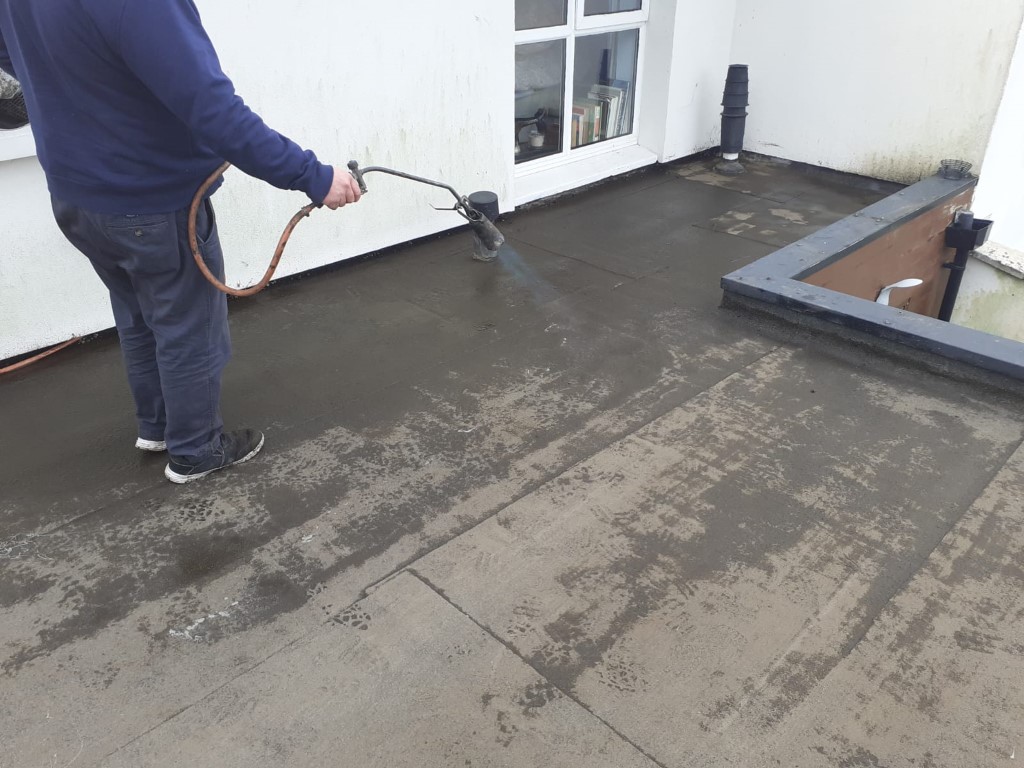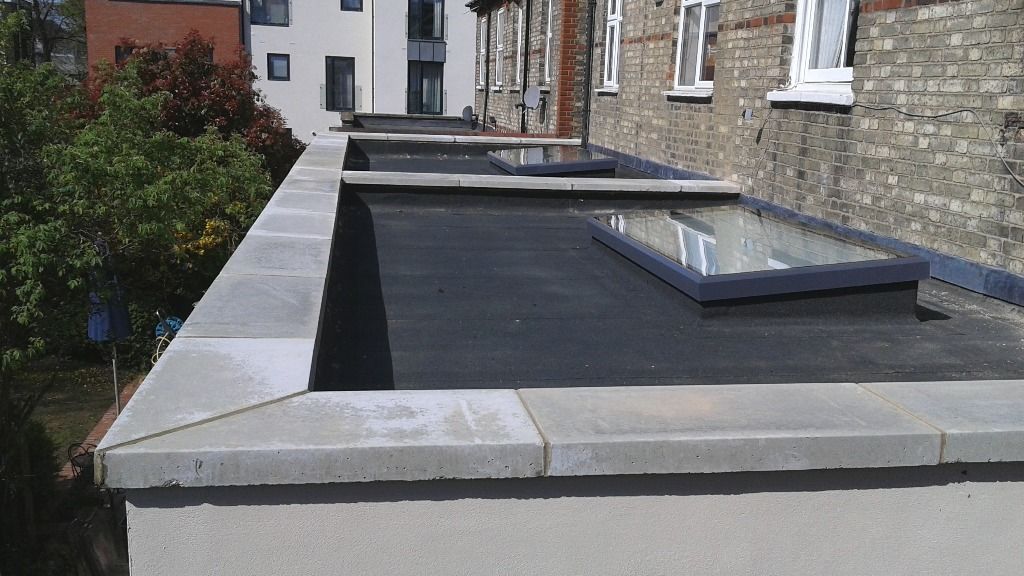On all roofs, especially the older ones, the wind and rain season always takes it toll, especially if there is a large amount of rain and frost. For flat roofs, these aspects significantly shorten the life of asphalt sealers. With a large amount of ice, it is necessary to clear the ice from the roof. But whilst scraping it away, we have to make sure that we don’t cut through the roof with a shovel or scraper.
Damage to the flat roof
Of all types of roofs, flat roofing suffer the most under the snow. The resulting crack or opening where the asphalt belt was broken is usually not easy. Even a tiny crack can be in a completely different place before we see a wet stain on the ceiling. So we need to carefully examine the entire roof and also not save too much on the material, so that we do not have to carry out further repairs anytime soon.
You can learn about flat roofing types here.

Materials that can be used
Originally, a penetration coating was painted on the concrete surface of the roof. He got dry and stretched out the first belt. This belt was heated with a burner, thus clinging to the base. The edge of the belt went beyond a bit of braiding. Similarly, we proceeded up to the third layer with an overlap of at least 10 cm.
The inner layers of the material were not the most suitable (paper board, rags, etc.) and therefore we often encountered defects.
Today we have asphalt mixtures more flexible. The inserts are made of glass mats, glass fabrics, metal foils, synthetic fibers or machine rag cardboard. Belts can withstand higher loads than before and are much more durable.
Repairs of flat roofs by torching
If we perform the repair only locally, we need to find leaks. Otherwise, one layer of strips should be welded to the entire surface. The molasses-covered lower surface will seal tight even with holes we haven’t seen. But we must not have water under the surface. It does not evaporate and makes lumps, which later burst.
We’re going to need a burner and a propane butane bottle to fix it. If we don’t own it, we can borrow it in a rental or from acquaintances. First we measure, cut and put asphalt strips. When heating, we need to make sure that the asphalt on the upper layer begins to melt and foam the bottom when heating.
This will connect the two belts. The work must be carried out quickly to prevent burns and thus damage the lower carrier insert. On the joints we will blur the asphalt with a spatula to the lost. If we work on a large area, we should be two and at least one of us should have experience with belt welding.
Always be very careful when working with any heat on your roof and be 100% sure the type of material you have on your roof is compliant with it. If you are not sure or have no experience with this type of work, we recommend other options for maintenance on your roof.

Liquid Fibre Glass
Another option for repairs is the use of liquid fibre glass. They can be used alone or with glass fabric. If we choose this option, it is advisable to paint the entire area of the roof, not only the damaged place. Before applying the coating, we need to fix the surface of the existing waterproof insulation.
This means filling the paint with a crack or heated with a burner and rub the asphalt with a spatula and cut through and repair blisters.
For minor repairs we will use asphalt sealant. It is used to glue small cracks, clear the joints, or to glue loose asphalt shingles. We do not need to heat asphalt strips when using it.
All quality repairs will greatly extend the life of the flat roof and will be well prepared for the possibility of large amounts of snow and low temperatures in the coming years.
Do You Need A Professional?
If you are ever in doubt about the work or need some expert advice, make sure to reach out to a professional roofer for tips. If you live in Ireland, we recommend TC Roofers who are experts at roof repair in Dublin with an excellent reputation.

